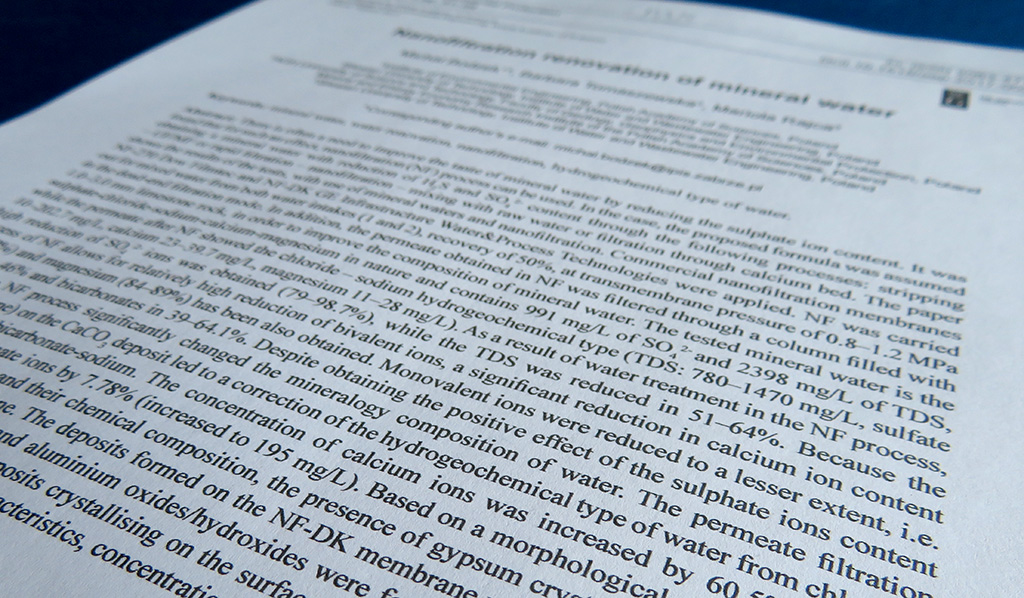How to adapt the scientific writing style for commercial white papers

Scientific journal articles have a long history as a means of communication between scientists. But is the structure they use suited for the broader audience of commercial white papers? Only up to a point, and in this post I’ll describe ten ways in which you can adapt your approach to boost the impact of your commercial writing.
Thinking about the target audience
The academic journal article – with its title, authors, abstract, introduction, results and discussion, conclusions and references – is as familiar to scientists as the conical flask or the calibration curve, and arguably just as indispensable for success in academia.
However, in the vast majority of cases the readership of journal articles is restricted to the small number of academics in the relevant research field.
If you’re a scientist who’s moved from academia into a business environment, and you need to target a wider audience with your results, then you’ll probably find that the fully-fledged ‘journal article’ structure won’t engage very well with your audience.
How easy is your document to understand?
As a former researcher and then journal editor, the reason why the ‘journal article’ structure fails to deliver in commercial writing is somewhat difficult to admit.
The truth is that the way journal articles are constructed and written makes them difficult to understand – a situation that is not improving. Academics are attuned to them because there is little choice in the matter, but in a commercial environment that is filled with more engaging material, if your final document feels too much like a journal article, it’s more likely to fail.

Adapting your writing for commerce
So you might need to change your mindset when compiling your document – but the good news is that this doesn’t mean you need to jettison your entire writing approach. The rigour involved in academic writing means that if you can write a good journal article, you’ve already got the essential skills to make a success of a more digestible format.
To give you a helping hand, I’ve listed below ten tips that will help you to adapt the way you write about your commercial scientific products or services. The result will be a white paper or report that is shorter, more focused, easier to understand… and so with more immediate impact.
#1: Think about the audience
For journal articles, you don’t need to think much about the audience because it’s already defined – it’s academics in your field who read the journal you’ve submitted it to. But when moving to the commercial arena, it is vital to develop a clearer picture of who the reader is.
And it’s not really much use to say “people who might be interested in my organisation and our products or services” – that’s taken as given! Much more detail is needed, such as:
- What do they care about?
- What challenges do they face?
- Why might they be interested in your organisation/product/service/report?
- What do they already know?
These and other questions critically affect the level of detail you include in the piece – a broader audience will need a little more help in understanding the background, for example. Help them to make sense of the topic, and don’t assume that they know everything already.
#2: Generalise the title
Titles in academic writing tend to be very specific (i.e. with names of chemicals, organisms or theoretical principles) and consequently rather long. This isn’t needed in commercial writing, where all you need is to convey the broad topic and the key benefit.
That’s not to say that you should push the sales angle too hard, as that can be off-putting, but avoiding unnecessary detail is definitely a good plan.
#3: Shorten the abstract
An abstract is generally used as a condensed version of the article – it sets out the rationale behind the work, describes the key results and explains the conclusions. And although a long abstract can assist automated indexing of a journal article, when writing commercially, excessive detail is largely self-defeating.
This is because you want your audience to read the rest of the document, so you can give them the full message about your product, service or results. If the abstract is long, they may give up before then, and you’ll have missed out on that opportunity. In any case, readers won’t be finding your white paper through searches of the abstract text in commercial and institutional journal repositories.
So all that the abstract needs to do is to expand slightly on the title, reassure the reader that your document is what they’ve been looking for, and provide them with an incentive to read on (perhaps with a nugget or two of information about what’s coming). One short paragraph should be sufficient.

#4: Put in more structural elements
Now what about the body text? It’s not uncommon in academic writing to find paragraphs that stretch for a whole column, or discussions that go for a page or more without any subheadings. This may be acceptable in scientific journals, but in other formats, writing that doesn’t have a clear structure is far less likely to get read.
So how should you apply that structure? Try using:
- Shorter paragraphs to break up your thoughts into digestible chunks.
- Bullet-points when you want to list three or more items (a format that is forbidden by style rules for many journals).
- Plenty of headers and subheads to allow the reader to skim through the document.
- Bold text to emphasise key points that would otherwise get lost.
#5: Remove the background
At the start of the main section of the article, it’s conventional to have a rigorous literature review – but in a commercial white paper this is largely a distraction from the purpose of the piece. By all means keep a brief summary of the current state of the art, but only enough to define the current challenges, so that you can set the new work in context.
Too much background can be a distraction from the purpose of the piece – so have just enough to set the new work in context.
If you really must have a substantial background section, then consider placing parts of it into a separate ‘call-out’ box. This allows readers who are interested in that point to get the full picture, while those who want to know about your results can skip past it.
#6: Cut the jargon
The introduction section is also the place where, as scientists, we like to bring in all the specialist terms we’re going to use. Use of such terms shows that we’re experts in our subject, but when communicating for a wider audience, every specialist phrase you use is potentially a barrier to understanding.
So to improve the comprehension of your work by the reader, I’d recommend to keep only those technical terms that are central to the work (and if necessary clearly define what they are at the point where they first appear).
It’s similar for abbreviations – only use them where they’re likely to be well-known by your target audience, or where continually using the expanded version would clog up your sentences.
#7: Keep the experimental section concise
A detailed section on experimental techniques, methods and conditions is the cornerstone of a strong journal article, because it enables others to repeat your work. Certainly, if your customers are academically minded then you’ll want to keep a substantial level of detail here, to avoid risking your credibility.
But in other cases a short summary of the equipment and conditions used would be fine, perhaps with a flowchart for easy visualisation of the entire process. In addition, it may be beneficial to have the full detail in a separate document available on request, because that would give potential clients an excellent reason to get in touch with you. Your experimental procedures represent a large investment of time and money – don’t give them away without good reason!

#8: Consider using the active voice
The passive voice has traditionally been used in academic writing because it conveys neutrality about the work you did – it keeps personal opinion out of it. For example:
But the active voice is gradually becoming more well-established in scientific literature, because it is more to the point and easier to understand.
So if you’re looking to boost audience engagement with your writing, try using the active voice when describing the parts of the study that you were responsible for. This doesn’t mean getting emotional about it (which is inappropriate in most scientific writing), but simply using personal pronouns such as ‘I’ and ‘we’, and adding a touch of opinion here and there:
#9: Delete (some of) the references
This may sound a bit of a drastic measure to many scientifically-trained readers, but you probably don’t need all those references. Outside academia, most readers won’t have subscriber access to journal articles anyway, and even if they can get hold of them (for example if they’re open-access), they’re unlikely to read them.
However, I’d recommend making a few exceptions to this general rule:
- If you need to refer to immediately relevant work, such as a previous study that the current work was based on, or a closely-related example.
- If you want to showcase examples of a product being used by researchers.
- If an overriding aim of the piece is to establish credibility amongst a new target audience (showing that you’ve ‘done your homework’).
- If you think the reader might find it genuinely helpful. For example, links to a comprehensive review or the latest industry report.

#10: Add a ‘call to action’
And finally, every piece should get the reader to do something. It could be as simple as to give you a call, visit your website, check meeting availability, or sign-up for a newsletter. But it has to be something – unless you’re happy for readers to get to the end of the document, think “well, that was nice”, and pick up another white paper (written by your competitor).
What next?
So there you have it. Ten ways of taking the ‘journal article’ approach to document structure and adapting it to writing commercial material such as white papers. I hope you’ve found this useful!
